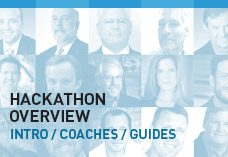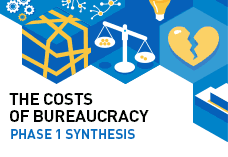New to the MIX? To participate in the Hackathon, please create a MIX account.
Already have a MIX account? Just log in with your MIX username and password.
If you've forgotten your account information or need any assistance, contact us.
IMAGINING ALTERNATIVES TO THE BUREAUCRATIC MODEL
In the current phase of the hackathon, we’re working to define the attributes of the post-bureaucratic organization—what new management practices can provide an alternative to the bureaucratic model of top-down control and formal rules and procedures?
In a paragraph or less, please share your idea for an alternative approach that could replace an existing bureaucratic management practice (or "like" one or more of the existing contributions below).
Hint: when trying to imagine alternatives, you might find it easier to pick an existing management practice, for example strategy development or performance reviews. Then share a new approach that you believe might more efficiently or effectively replace the existing practice. You can also get some additional context and inspiration by reading Gary Hamel’s latest blog. Please share your ideas by May 16.





